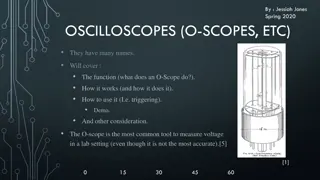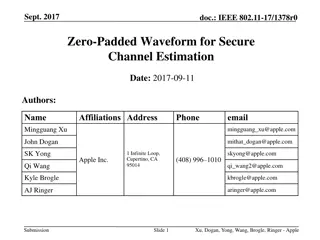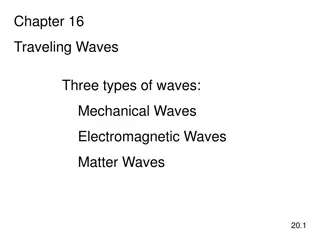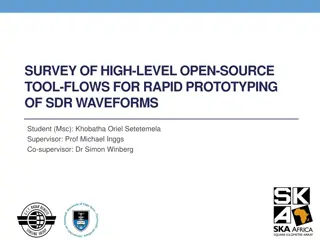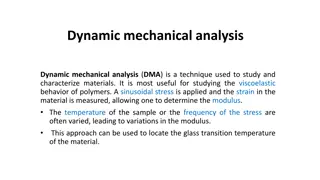
AC Circuits: Sinusoidal Alternating Waveforms
Dive into the world of AC circuits with Dr. Ahmed S. Abdullah as he explains sinusoidal alternating waveforms, peak amplitudes, frequencies, and more in this comprehensive guide. Learn how to analyze and interpret sinusoidal voltage waveforms effectively.
Uploaded on | 1 Views
Download Presentation

Please find below an Image/Link to download the presentation.
The content on the website is provided AS IS for your information and personal use only. It may not be sold, licensed, or shared on other websites without obtaining consent from the author. If you encounter any issues during the download, it is possible that the publisher has removed the file from their server.
You are allowed to download the files provided on this website for personal or commercial use, subject to the condition that they are used lawfully. All files are the property of their respective owners.
The content on the website is provided AS IS for your information and personal use only. It may not be sold, licensed, or shared on other websites without obtaining consent from the author.
E N D
Presentation Transcript
AC Circuits Sinusoidal Alternating Waveforms By Dr. Ahmed S. Abdullah .
Sinusoidal Alternating Waveforms Sinusoidal Alternating Waveforms
Sinusoidal voltage Waveform Peak amplitude: The maximum value of a waveform as measured from its average, or mean, value, denoted by uppercase letters [such as Em] Peak-to-peak value: Denoted by Ep-por Vp-p the full voltage between positive and negative peaks of the waveform, that is, the sum of the magnitude of the positive and negative peaks. Period (T ): The time of a periodic waveform. Cycle: The portion of a waveform contained in one period of time.
Sinusoidal voltage Waveform Frequency ( f ): The number of cycles that occur in 1 s. The unit of measure for frequency is the hertz (Hz), where 1 ????? 2 ????? 2.5 ?????
Sinusoidal voltage Waveform Frequency ( f ): The number of cycles that occur in 1 s. The unit of measure for frequency is the hertz (Hz), where
Sinusoidal voltage Waveform EXAMPLE 1: For the sinusoidal waveform in Figure shown. a. What is the peak value? b. What is the instantaneous value at 0.3 s and 0.6 s? c. What is the peak-to-peak value of the waveform? d. What is the period of the waveform? e. How many cycles are shown? f. What is the frequency of the waveform? Solutions: a.8 V. b. At 0.3 s, 8 V; at 0.6 s, 0 V. c.16 V. d.0.4 s. e.3.5 cycles. f.2.5 cps, or 2.5 Hz.
Sinusoidal voltage Waveform The unit of measurement for the horizontal axis can be time, degrees, or radians. ? = ?? ? = ??? =?? The angular frequency in radians/s ? 360?= 2? ??????? 1 ???.=360? =180? = 57.3? 2? ? The conversions equations between the two are the following:
Sinusoidal voltage Waveform Applying these equations, we find
GENERAL FORMAT FOR THE SINUSOIDAL VOLTAGE ? = ??sin(?) ? = ??sin(??) ? = ??sin(2???) ? = ??sin(2? ??)
GENERAL FORMAT FOR THE SINUSOIDAL CURRENT ? = ??sin(?) ? = ??sin(??) ? = ??sin(2???) ? = ??sin(2? ??)
Phase Shift If a sine wave does not pass through zero at t =0 s as in Figure below, it has a phase shift. Waveforms may be shifted to the left or to the right. ? = ??sin(?? + ?) ? = ??sin(?? ?)
Phase Difference Phase difference refers to the angular displacement between different waveforms of the same frequency.
AVERAGE VALUE ? ???? = ??sin? ?? 0
AVERAGE VALUE EXAMPLE 2: Determine the average value of the sinusoidal waveform in Figure shown. Solution: By inspection it is fairly obvious that the average value of a pure sinusoidal waveform over one full cycle is zero. +2?? 2?? 2? ? = = 0 ?
EFFECTIVE VALUES (RMS) The equivalent dc value of a sinusoidal current or voltage is ? ? or 0.707 of its peak value.
EFFECTIVE VALUES (RMS) The equivalent dc value of a sinusoidal current or voltage is ? ? or 0.707 of its peak value.
EFFECTIVE VALUES (RMS) EXAMPLE 3: Find the rms values of the sinusoidal waveform in each part in Figure shown. Solution: For part (a), ????= 0.707 ?? = 0.707 (12 10 3) = ?.?? ?? For part (b), ????= 0.707 ?? = 0.707 (169.7) ??? ?
EFFECTIVE VALUES (RMS) EXAMPLE 4: Determine the effective values (rms) of ? ? = 10sin ?? ? ? ? = 50sin ?? + 20??? ? ? = 100cos 2?? ? Solution: Since effective values depend only on magnitude, ? ????= 0.707 ??= 0.707 10 ? = ?.?? ? ? ????= 0.707 ??= 0.707 50 ?? = ??.?? ?? ? ????= 0.707 ??= 0.707 100 ? = ??.? ?
References Boylestad, Robert L. Introductory circuit analysis. Pearson Education, 2010. Robbins, Allan H., and Wilhelm C. Miller. Circuit analysis: Theory and practice. Cengage Learning, 2012. Sadiku, Matthew NO, and Chales K. Alexander. Fundamentals of electric circuits. McGraw-Hill Higher Education, 2007.














